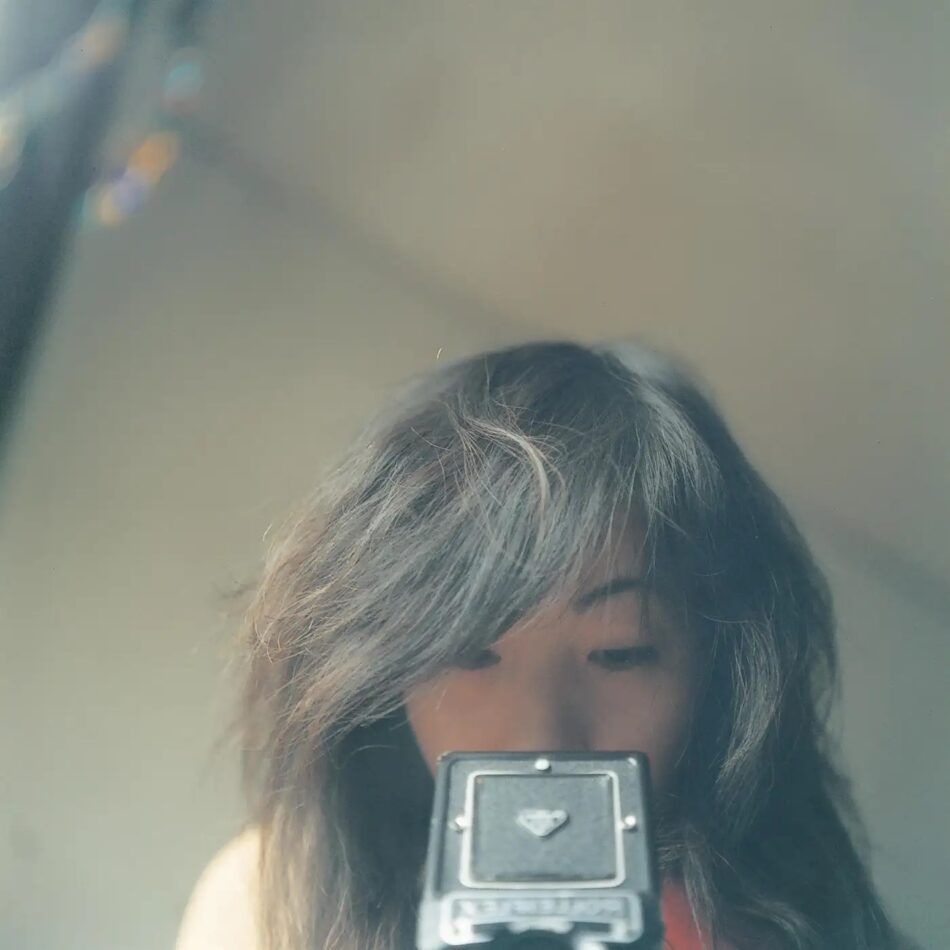
Rinko Kawauchi’s dreamy photographs seem to rise from the earth as living beings, whether they’re shots of her children playing or dramatic scenes of volcanic landscapes. They are primordial and poetic, personal and prophetic, and light is as much the star of the pictures as any more material thing she points the camera at.
Light sources and reflections glint and sparkle, washing the photographs in gentle hues; hard edges soften or become hazy, as if viewed through squinted eyes veiled by lashes. Kawauchi achieves her trademark effects with the camera (rather than in postproduction), usually her trusty Rolleiflex with 6×6 film.

One of the most recognized artists in Japan, Kawauchi is being celebrated with her first Swedish museum exhibition. The show, “a faraway shining star, twinkling in hand,” at Fotografiska Stockholm through April 14, centers on two series: “M/E” and the ongoing “An interlinking.”
The pictures in “An interlinking” capture micro-moments in Kawauchi’s life, exploring themes of growth and joy, death and decay. The settings are cropped or partially concealed in ways that open them up to viewers’ projections: her toddler hiding behind a translucent curtain, a close-up of cracked tiles emblazoned with butterflies, a stiff bird frozen on a blanket of snow with nothing around to place it in a particular location.


“M/E” (for “Mother Earth” and also “me”) stemmed from the photographer’s 2019 journey to Iceland, where she shot wide-view photos of epic glaciers, geysers and waterfalls. But the series took a different turn in 2020, when COVID lockdowns prevented her from returning to the Nordic island nation.
From 2020 onward, the “M/E” photos began to look more like those from “An interlinking” — but with an eye to the natural world. So, we see a tiny snake trapped under a bell jar, a sliced and peeled apple on a plate, a spiderweb dotted with dewdrops. These are scenes hinting at a family endlessly curious about the goings-on in the natural environment of rural Chiba, Japan, where Kawauchi has lived since relocating there from Tokyo in 2018.


“We get to see small glimpses from Kawauchi’s life — sometimes it is in a close-up photograph of an apple she or someone else has just eaten or a view of a beautiful landscape,” says Jessica Jarl, global director of exhibitions at Fotografiska. “Everything is connected. The works are about life and our presence on this planet. She has an amazing ability to tell a photographic tale, capturing everyday life or the Icelandic landscape, but always with her recognizable dreamlike style and in a soft color palette.”
Born in Shiga Prefecture in 1972, Kawauchi studied graphic design and photography at Seian Women’s College (now Seian University of Art and Design). After graduating, in 1993, she entered into a creative career in advertising and commercial projects.
Eight years later, everything changed. In her spare time, Kawauchi had been taking more-artistic photographs with her Rolleiflex. These had the spritely, celestial-yet-quotidian flavor of the work she produces today, inspired by Japan’s indigenous Shinto religion, which teaches that all earthly entities and forces of nature are embodied by supernatural beings called kami.


In 2001, she released three photo books simultaneously: Utatane (“nap,” or “siesta”), Hanako (a feminine Japanese name) and Hanabi (“fireworks”). The bold move got her noticed. Hanabi and Hanako earned Kawauchi the 2002 Ihei Kimura Prize for new photography, and she won the Photographic Society of Japan’s 2002 Rookie of the Year Award as well.
“Already in the first series, she had found her unique style,” Jarl says, “the poetic quality and her way of working with the light and sticking to the soft color palette. I think she has refined this style over the years.”

The publications also set the tone for what would be Kawauchi’s main medium for sharing her work: lush and spare books that pair her photography with her poetry.
She has produced more than two dozen such volumes, including AILA (2004), Cui Cui (2005), Murmuration (2010), Illuminance (2011), Ametsuchi (2013), Halo (2017), When I was seven. (2019) and M/E On this sphere Endlessly interlinking (2022). These have often been expanded into museum exhibitions around the globe, held at such renowned venues as the Museu de Arte Moderna de São Paulo; the ARGOS Centre for Art and Media, in Brussels; the Tokyo Opera City Art Gallery; the Shiga Museum of Art; the Gallery at Hermès, in New York; and Christophe Guye Galerie, in Zurich, where she has had several shows since 2013.

In the Fotografiska exhibition, which travels to the museum’s branch in Tallinn, Estonia, in May, Kawauchi and Jarl have included video works, photographic sculptures and lightboxes. Still, it’s the more ordinary scenes that tug at the heart.
“It’s hard to pick a favorite, but one that I like is a photograph of her child walking down a road, the sun’s rays filtering through the trees,” Jarl says. “As a mother, I can relate and have strong feelings when looking at it: How you as a parent see your children grow up and how they shape their personalities and lives. This little person is in this big world, and you want to protect them and stay in the moment.”





